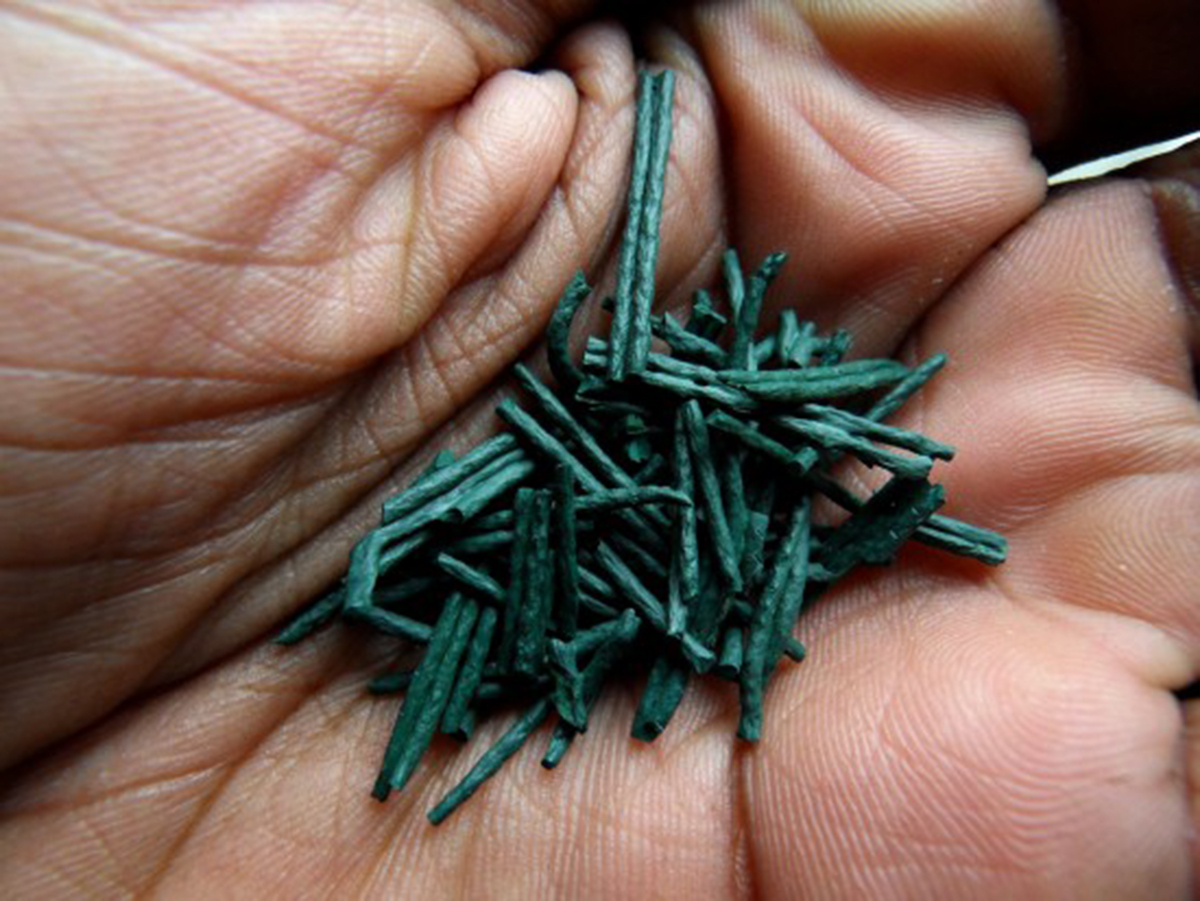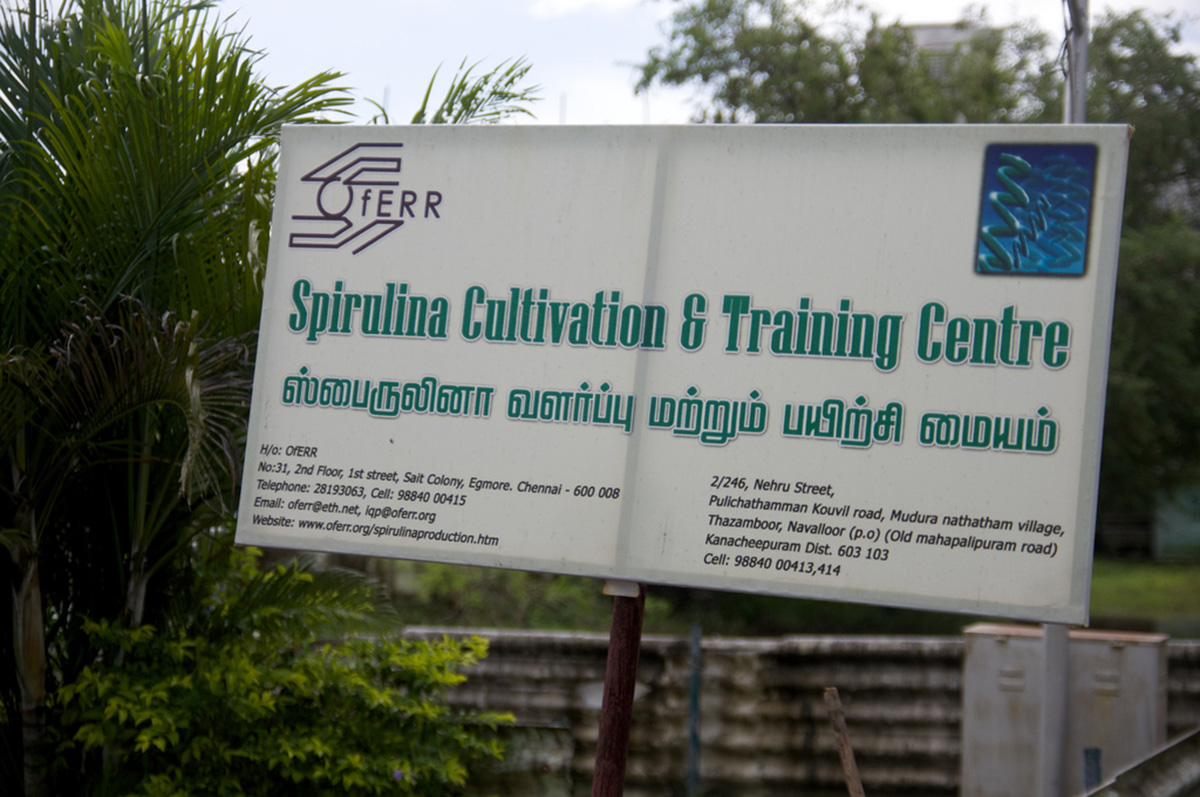The blue-green bacterium Spirulina tends to get a bad rap from the nutritional science establishment.
I had never really heard of it until I took a graduate course in nutrition in Germany in the 1990's. My professor was no fan of spirulina (the name of the bacterium is capitalized, but the name of the product is not). "Spirulina is an anti-vitamin!" he roared. "It destroys methylcobalamin (vitamin B12)!"
It turns out this isn't really true, but no questioning was permitted on this issue in that class. "Anti-vitamin activity" became a commonly repeated concern about the product.

Spirulina Makers Overcome Early Errors
Then in the late 1990's, the rumor mill created an even worse label for spirulina products. They were supposedly contaminated with sewage. Although Earthrise Nutritionals began producing spirulina in pristine conditions in the desert in 1976, in the 1980's was also collected from relatively pristine waters just off the shore of the Big Island of Hawaii. If you have ever gone wading on the beach on the Kona side of the island, you may have noticed this slippery slimy substance that gets between your toes. Tiny fish love to eat it. That's mostly spirulina. A major American health products manufacturer, however, recognized that labor costs were much lower in Mexico, and had started collecting it at Lake Texcoco in the Valley of Mexico, in greater Mexico City. One doesn't associate cleanliness with runoff water in Mexico City, and spirulina got an even worse reputation.
Spirulina Myths Dispelled
Neither of these concerns is valid today. Scientific research in the 1990's (which my professor misunderstood) didn't find that spirulina contains "anti-B12." It found that spirulina produces vitamin B12, but in a form that cannot be used by the human body. It's not so much an anti-vitamin as a pseudo-vitamin; the compound in spirulina (which has the chemical name methyladeninylcobamide, in case you're interested) does some of the things that B12 does in humans for the bacteria. It's only a problem if animals that feed on bacteria don't get vitamin B12 from another source. It doesn't circulate through the human body so it can track down and destroy active vitamin B12.
READ Food Is Medicine: Superfoods to Improve Your Mood
Modern Spirulina Is Produced Under Pristine Conditions
There's also relatively little reason to be concerned about contamination in spirulina today. The world's largest spirulina farm isn't along an ocean or a lake, but rather in a remote part of the desert in Southern California. Spirulina is grown in huge (5000-square meter) open pools lined with food-grade plastic with carbonation bubbled into the purified water to encourage growth. The company that owns this farm works closely with producers in Hawaii, China, and Thailand. Producers in Germany and Canada grow spirulina indoors in giant vats. Both systems minimize contamination. There are "stray" bacteria in all spirulina products, but since the spirulina and any other bacteria are sterilized before they are bottled, there haven't been any reports of illness from contaminated spirulina since 2008. Earthrise (the desert grown spirulina) and Prime Chlorella are among a number of unquestionably safe products.
What's the Best Spirulina And The Best Way To Use It?
In the twenty-first century, there's no reason not to insist on organic spirulina. That doesn't mean that the spirulina was harvested from nature, but it does mean that it was given nothing but natural, filtered, mineral-rich water and sunshine.
If spirulina is something you don't use very often, the spirulina pills will keep longer on the shelf. If spirulina is something you use every day, then spirulina powder mixed in water or juice delivers spirulina nutrients more completely.
Why would you use spirulina every day?
- Spirulina provides complete protein, all the amino acids found in dairy, eggs, fish, or meat. It has slightly less cysteine, lysine, and methionine, however, due to the way the bacterium uses its version of vitamin B12.

- Spirulina is a good source of eye health nutrients lutein and zeaxanthine.
- Spirulina is a good source of vitamins, including vitamin B1 (thiamine), vitamin B2 (riboflavin), vitamin B3 (niacin), vitamin B5 (pantothenic acid), vitamin B6 (pyridoxine), vitamin B7 (biotin), vitamin B9 (folic acid), vitamin C (ascorbic acid), vitamin D2 (ergocalciferol), vitamin E (alpha- and gamma-tocopherol), and vitamin K1 (phylloquinone). Some strains of spirulina such as the product made by Nutrex Hawaii also contain vitamin K2 (menaquinone).
- Spirulina is a good source of minerals including calcium, iron, magnesium, manganese, phosphorus, and zinc.
- Spirulina is a source of gamma-linolenic acid (GLA), an omega-6 essential fatty acid that helps regulate the immune system and, in diabetics, reduces nerve pain from neuropathy.
The benefits of spirulina aren't limited to its nutritional power. Recent research finds that the product as a whole is supportive of recovery in an astonishing variety of conditions.
- Spirulina added to misola (soy,millet, and peanut) accelerated recovery from kwashiorkor and marasmus in children who had survived starvation.
- In an animal experiment, spirulina increases mineral deposits into bone after menopause.
- In an animal experiment, spirulina protected the liver from damage by fatty liver.
- In an animal experiment, spirulina protected against atherosclerosis caused by an excess of small particles of LDL cholesterol.
- HIV patients in Cameroon given spirulina for six months had more T-cells and lower viral load.
- In an animal experiment, giving both spirulina and fish oil reduced the progress of atherosclerosis even when cholesterol levels were high.
- In a clinical trial in Cameroon, spirulina reduced insulin resistance in patients with chronic infections.
- In a clinical trial in India, diabetic volunteers who took spirulina for two months had both lower blood sugar levels and lower LDL cholesterol levels.
- Spirulina is antibacterial against certain kinds of Gram-positive bacteria that cause infections in humans, including Staphylococcus aureus FRI 722 and Bacillus cereus F 4810.
- Spirulina contains compounds that act as ACE-inhibitors, lowering blood pressure.
READ Fruits And Veggies: 7 Superfood Smoothie Recipes
The producers of spirulina have made enormous strides in eliminating heavy metals and bacterial contamination, particularly with species that produce the toxic compound BMAA. Spirulina isn't really a superfood. It's not enough to knock out any disease condition, and you need basic nutrients in amounts greater than you are likely to get from spirulina alone. But if you are concerned about filling gaps in your nutrition, or you need support in recovery from chronic disease, spirulina is an excellent choice.
- Vardaka E, Kormas KA, Katsiapi M, Genitsaris S, Moustaka-Gouni M. Molecular diversity of bacteria in commercially available "Spirulina" food supplements. PeerJ. 2016 Jan 21
- 4:e1610. doi: 10.7717/peerj.1610. eCollection 2016. PMID: 26819852.
- Photo courtesy of sweetonveg: www.flickr.com/photos/sweetonveg/4987719694/
- Photo courtesy of sweetonveg: www.flickr.com/photos/sweetonveg/4987719694/
- Photo courtesy of PWRDF: www.flickr.com/photos/45005153@N07/5905978844/


Your thoughts on this